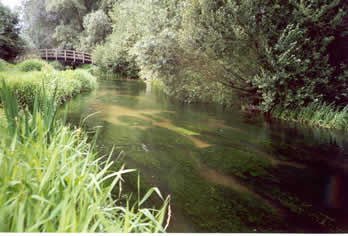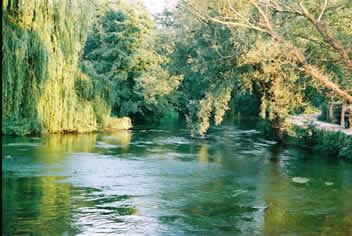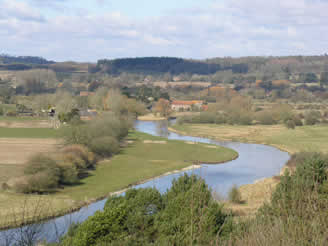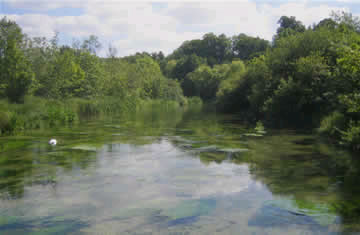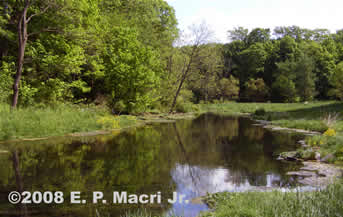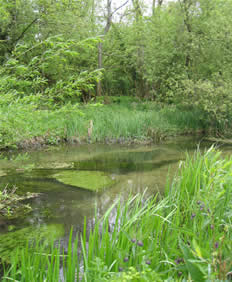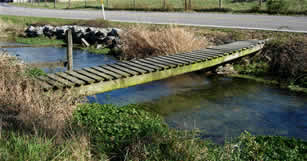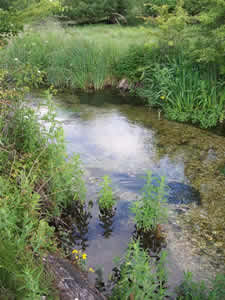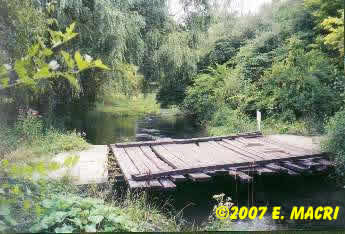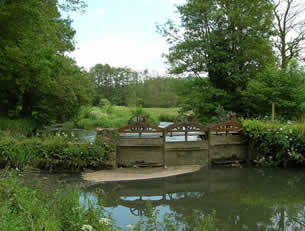English Spring Creeks
English Chalk Streams and Spring Creeks
by
Eugene P. Macri Jr.
Aquatic and Environmental Scientist
English Chalk Streams and Pennsylvania Limestone Spring Creeks are extremely similar in many ways including their geology, biogeochemistry, fishery, fly hatches and fishing. In fact, a close examination of these streams (I’m working on a future treatyse of a complete comparison analysis) will show an almost remarkable similarity to most fly anglers. In the photos below look carefully at the substrates, currents, water clarity, and the flora of the stream. In some of the photos it is almost impossible to tell whether the streams are in Great Britian or Pennsylvania. The photo below shows one section of the River Test. English Chalk Stream The River TestNotice that this section of the stream looks like it could be on the Letort or Big Spring. Many of the Chalk Streams of Britian are long rivers as compared to the short version of their Pennsylvanian counterparts. Also, it should be understood that the English Chalkstreams are maintained and managed in many sections by Riverkeepers. These Riverkeepers including the late legendary Frank Sawyer manage these streams for fishing! There is a misunderstanding in America about how Riverkeepers actually work and how they manage streams. There is also great debate in Britian over stream management policies and how the streams should be maintained. Also, studies and surveys have also shown a massive decline in the insect populations in these streams also. There are no easy answers or solutions to the problems facing the these magnificent waters but the same “hatchery mentaility” that existed for 50 years or more in the state will not save these waters.
I grew up in Western Pennsylvania dreaming about English Chalk Streams in England and the Limestone Spring Creeks of South-Central Pennsylvania. These were the respective birthplaces of fly fishing in America and Europe. These were the streams that would test even the best fly fishermen in the world. After I graduated from college I moved to South-Central Pennsylvania and fished those streams with likes of Charlie Fox, Gene Utech, Vince Marinaro, Tommy Thomas, and many other legendary limestone fly fishermen. To say these streams were different would be an understatement. But my old buddy Charlie Fox told me numerous times that these streams made fly fishing what it is today. In essence the environment shaped the selectivity of the trout and this forced fly fishermen to develop new techniques, methods, and equipment to fool these ultra-wary fish. The streams in Pennsylvania and Great Britain shaped and directed modern fly fishing.
Much of what we read in those days were English books like Frank Sawyer’s, Nymphs and The Trout and Nymph Fishing for Chalk Stream Trout and Minor Tactics of the Chalk Stream by GEM Skues. In America Vince Marinaro’s A Modern Dry Fly Code, and Charlie Fox’s, This Wonderful World of Trout were standard fare for selective trout.
These limestone spring creeks were magical places and it was a pilgrimage that the most famous fly anglers made to the mecca of spring creeks near Carlisle, Pennsylvania. These included anglers like Arnold Gingrich, the publisher of Esquire, and Ernie Schwiebert. Of course, there were the great legendary fly anglers Lefty Kreh, Ed Koch, and Ed Shenk that just happened to live in the area.
Charlie Fox often told me of the number of English outdoor and fishing writers who would make the trip across the big pond for these streams in the 1930s and 40s. These streams were so like English Chalk Streams that the British writers couldn’t believe it. Let us begin by a visual examination of the English Chalk Streams and the Pennsylvania Limestone Spring Creeks.
Biogeochemically these streams are very much alike. However, there are also differences which we will explore. The most important aspect of a trout fishery will always be water temperature. The English Chalk Streams and The Pennsylvania Limestone Spring Creeks for the most part share similar temperature regimes of around 45 to 50 degrees F. Most of these streams also share a similar geology in that their origins are of a karst nature. Thus, similar temperature regimes, and similar geologies which determine the chemistry gives us a similar biological community.
Like their counterparts in Europe, Pennsylvania Limestone Spring Creeks face similar challenges and problems. One of the greatest problems is how the streams are to be maintained and managed. This actually becomes the conditions as espoused by the theory of English Riverkeepers versus the conditions wanted by the public as a whole. Pennsylvania Limestone Springs face this same problem and it is a major one. In coming selections of this treatyse we will explore these factors and where they lead us on the path of enlightment or the path of destruction. In the United States “Science by Committee” with government interference and so called “public input” has led to one of the greatest environmental black holes of money and poor science and that is of course, The Chesapeake Bay. Well we have been trying to save the bay for over 30 years and it continues to decline. Simply put we can’t save the Bay if we don’t save the tributaries, streams and rivers which empty into her but for some reason that seems like a theory from outer space.
In the same regard standard scientific protocols must be employed if the studies and management of these streams is to be productive rather than a lesson in what is seldom successful which is “science by committee and everything else.” What fishermen and fly fishermen want in these streams may be vastly different from what everyone else desires. However, since in the states these public waters are potential for vast local incomes from fishing it would seem logical that these streams would be managed from the standpoint of a wild trout fishery.
This photo is of the Avon Valley. But it looks like it could easily be in the Cumberland Valley, Pennsylvania. Notice the country side does it look like Big Spring to you? In this next photo is the River Itchen at Ovington.
Here’s a Photo of Big Spring near Newville, PA.
The English Chalk Stream Bourne compared to Falling Spring in Chambersburg PA.
Here’s Falling Spring:
Another picture of the Bourne
This photo shows the famed Letort compare it to the little English Chalk Stream. Quite amazing isn’t it.


